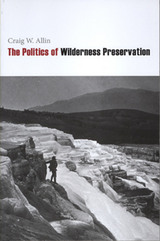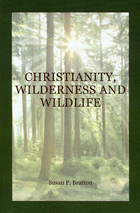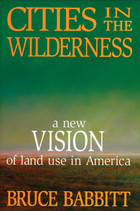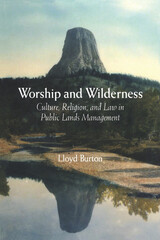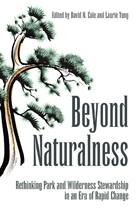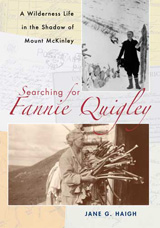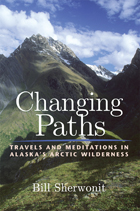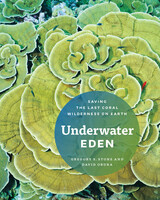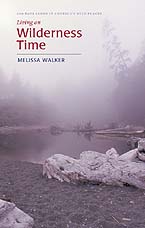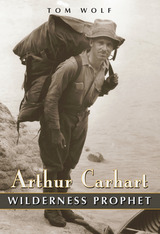WildernessCollection by kdm (11 items)Conservation, Development, and Usage of the Wilderness Areas Includes the following tags:
1892-, 1950-, Alaska, Applied Sciences, Brooks Range (Alaska), Carhart, Arthur Hawthorne, Changing Paths, Cities, Conservationists, Coral reef conservation, Culture, Earth, Ecosystem management, Environmentalists, Era, Guidebooks, Hiking, History of doctrines, Land use, Living, Management, Marine Biology, Meditations, Nature conservation, Oceans & Seas, Planning, Political aspects, Political Science, Politics, Protected areas, Public lands, Saving, Shadow, Spirituality, Tennessee, Travel, Travels, Walker, Melissa, West (U.S.), Wilderness, Wilderness (Theology), Wilderness areas, Wildlife, Wolf, Tom, Worship
See More
|
The Politics of Wilderness Preservation
by Craig W. Allin
University of Alaska Press, 2008
Craig Allin explores here the history of wilderness preservation politics in the United States. American pioneers originally viewed the wilderness as an enemy to destroy, Allin recounts, but with the rapid decline in natural resources in the nineteenth century, citizens realized their error and began to enact revolutionary environmental policies. Allin explores the far-reaching political and economic impact of these policies, as well as their status today and their uncertain future. With its timely, cutting-edge analysis, The Politics of Wilderness Protection is must-read for environmentalists and policymakers alike.
1
|
Christianity, Wilderness, and Wildlife
by Susan Bratton
University of Scranton Press, 2009
In Christianity, Wilderness, and Wildlife, Susan Bratton brings to life the tradition of Christian wilderness spirituality, from Noah’s and Moses’ experiences in the Old Testament to Celtic monasteries and the Franciscan order. She traces a long history of divine encounters in biblical literature such as visions, providential protection, spiritual guidance and calls to leadership—all of which highlight the importance of nature in Christian thought. This book will command the attention of the growing audience for works at the intersection of environment and spirituality.
2
|
Cities in the Wilderness
by Bruce Babbitt
Island Press, 2005
In this brilliant, gracefully written, and important new book, former Secretary of the Interior and Governor of Arizona Bruce Babbitt brings fresh thought--and fresh air--to questions of how we can build a future we want to live in. We've all experienced America's changing natural landscape as the integrity of our forests, seacoasts, and river valleys succumbs to strip malls, new roads, and subdivisions. Too often, we assume that when land is developed it is forever lost to the natural world--or hope that a patchwork of local conservation strategies can somehow hold up against further large-scale development. In Cities in the Wilderness, Bruce Babbitt makes the case for why we need a national vision of land use. We may have a space program, he points out, but here at home we don't have an open-space policy that can balance the needs for human settlement and community with those for preservation of the natural world upon which life depends. Yet such a balance, the author demonstrates, is as remarkably achievable as it is necessary. This is no call for developing a new federal bureaucracy; Babbitt shows instead how much can be--and has been--done by making thoughtful and beneficial use of laws and institutions already in place. A hallmark of the book is the author's ability to match imaginative vision with practical understanding. Babbitt draws on his extensive experience to take us behind the scenes negotiating the Florida Everglades restoration project, the largest ever authorized by Congress. In California, we discover how the Endangered Species Act, still one of the most effective laws governing land use, has been employed to restore regional habitat. In the Midwest, we see how new World Trade Organization regulations might be used to help restore Iowa's farmlands and rivers. As a key architect of many environmental success stories, Babbitt reveals how broad restoration projects have thrived through federal- state partnership and how their principles can be extended to other parts of the country. Whether writing of land use as reflected in the Gettysburg battlefield, the movie Chinatown, or in presidential political strategy, Babbitt gives us fresh insight. In this inspiring and informative book, Babbitt sets his lens to panoramic--and offers a vision of land use as grand as the country's natural heritage.
3
|
Worship and Wilderness
by Lloyd Burton
University of Wisconsin Press, 2002
Questions about land use, conservation, and preservation—already so perplexing and contentious—take on a new complexity and greater urgency when the land in question is understood as sacred. This is a view increasingly held, as adherents of mainstream religions come to recognize what indigenous peoples knew centuries ago—that the sacred inheres in nature itself. What such a trend means and how it involves the forces of culture, religion, and constitutional law (especially First Amendment clauses concerning the free exercise of religion) are considered with a remarkable breadth and depth of understanding in this important new work.
4
|
Beyond Naturalness
edited by David N. Cole and Laurie Yung
Island Press, 2010
The central concept guiding the management of parks and wilderness over the past century has been “naturalness”—to a large extent the explicit purpose in establishing these special areas was to keep them in their “natural” state. But what does that mean, particularly as the effects of stressors such as habitat fragmentation, altered disturbance regimes, pollution, invasive species, and climate change become both more pronounced and more pervasive? Beyond Naturalness brings together leading scientists and policymakers to explore the concept of naturalness, its varied meanings, and the extent to which it provides adequate guidance regarding where, when, and how managers should intervene in ecosystem processes to protect park and wilderness values. The main conclusion is the idea that naturalness will continue to provide an important touchstone for protected area conservation, but that more specific goals and objectives are needed to guide stewardship. The issues considered in Beyond Naturalness are central not just to conservation of parks, but to many areas of ecological thinking—including the fields of conservation biology and ecological restoration—and represent the cutting edge of discussions of both values and practice in the twenty-first century. This bookoffers excellent writing and focus, along with remarkable clarity of thought on some of the difficult questions being raised in light of new and changing stressors such as global environmental climate change.
5
|
Searching for Fannie Quigley
by Jane G. Haigh and Jane G. Haigh
Ohio University Press, 2007
At the age of 27, Fannie Sedlacek left her Bohemian homestead in Nebraska to join the gold rush to the Klondike. From the Klondike to the Tanana, Fannie continued north, finally settling in Katishna near Mount McKinley. This woman, later known as Fannie Quigley, became a prospector who staked her own claims and a cook who ran a roadhouse. She hunted and trapped and thrived for nearly forty years in an environment that others found unbearable.
6
|
Changing Paths
by Bill Sherwonit
University of Alaska Press, 2009
Changing Paths: Travels and Meditations in Alaska’s Arctic Wilderness is an autobiographical exploration of author Bill Sherwonit’s relationship with the Alaska wilderness. Written in three parts, it first describes Sherwonit’s introduction to the Brooks Range and his years as an exploration geologist. Taking a step back, the author then takes us into the past to explore his childhood roots in rural Connecticut and his recognition of wild nature as a refuge. He concludes with his emergence as a nature writer and wilderness advocate. An engrossing, fascinating, and eye-opening tale of one man’s life and of wilderness conceptions, this vivid description of an area of Alaska that few people get to experience is authentic and enlightening. It is an extraordinary contribution to the literature of place from one of Alaska’s most accomplished nature writers.
7
|
Underwater Eden
edited by Gregory S. Stone and David Obura
University of Chicago Press, 2012
“It was the first time I’d seen what the ocean may have looked like thousands of years ago.” That’s conservation scientist Gregory S. Stone talking about his initial dive among the corals and sea life surrounding the Phoenix Islands in the South Pacific. Worldwide, the oceans are suffering. Corals are dying off at an alarming rate, victims of ocean warming and acidification—and their loss threatens more than 25 percent of all fish species, who depend on the food and shelter found in coral habitats. Yet in the waters off the Phoenix Islands, the corals were healthy, the fish populations pristine and abundant—and Stone and his companion on the dive, coral expert David Obura, determined that they were going to try their best to keep it that way.
Underwater Eden tells the story of how they succeeded, against great odds, in making that dream come true, with the establishment in 2008 of the Phoenix Islands Protected Area (PIPA). It’s a story of cutting-edge science, fierce commitment, and innovative partnerships rooted in a determination to find common ground among conservationists, business interests, and governments—all backed up by hard-headed economic analysis.
Creating the world’s largest (and deepest) UNESCO World Heritage Site was by no means easy or straightforward. Underwater Eden takes us from the initial dive, through four major scientific expeditions and planning meetings over the course of a decade, to high-level negotiations with the government of Kiribati—a small island nation dependent on the revenue from the surrounding fisheries. How could the people of Kiribati, and the fishing industry its waters supported, be compensated for the substantial income they would be giving up in favor of posterity? And how could this previously little-known wilderness be transformed into one of the highest-profile international conservation priorities?
Step by step, conservation and its priorities won over the doubters, and Underwater Eden is the stunningly illustrated record of what was saved. Each chapter reveals—with eye-popping photographs—a different aspect of the science and conservation of the underwater and terrestrial life found in and around the Phoenix Islands’ coral reefs. Written by scientists, politicians, and journalists who have been involved in the conservation efforts since the beginning, the chapters brim with excitement, wonder, and confidence—tempered with realism and full of lessons that the success of PIPA offers for other ambitious conservation projects worldwide.
Simultaneously a valentine to the diversity, resilience, and importance of the oceans and a riveting account of how conservation really can succeed against the toughest obstacles, Underwater Eden is sure to enchant any ocean lover, whether ecotourist or armchair scuba diver.
8
|
Living on Wilderness Time
by Melissa Walker
University of Virginia Press, 2002
Soon after her fiftieth birthday, Melissa Walker set out on a journey that many women of her generation have mapped only in their dreams. Having spent her adult life raising children and climbing the academic ladder, Walker decided to put some of the environmental theories she'd taught into practice. Leaving her suburban life, she ventured into the wilderness.
See More
Like many American chroniclers before her who have surrendered to the aimless pleasures of the road, Walker had no geographical destination in mind, but she did have two definite goals--one personal, one political--for her journey. She was looking for the peace and solitude of the backcountry, certainly, but she also wanted to learn the dynamics of preserving wild places and to devote herself to that cause. Walker took off on three extended solitary trips over the next two years, establishing a way of life for herself that continues to this day. In the Sky Islands of southern Arizona, on the banks of the Popo Agie River and the Wind River Mountains in Wyoming, in Yellowstone, Grand Teton, Rocky Mountain, and Olympic National Park, in Gila and Glacier Peak Wilderness, she encountered the hazards of wild animals and extreme weather, and she began to reassess what parts of her life she could control. Her belief in the primacy of individual achievement changed as she confronted the hidden structures of life. And her understanding of her environment broadened when in addition to grizzly bears, bighorn sheep, and mountain lions, she also met ranchers, loggers, cowboys, and outfitters whose livelihoods depend on activities that may threaten wilderness. Living on Wilderness Time is a book for those who have visited wild places and want to return and for others whose overcommitted urban lives make them long for land where time is measured differently and human beings are scarce. Above all it is a call to join those, like Aldo Leopold, who see wilderness as vital to the human community. -------------------------------------------------------------------------------- "A compelling travel narrative and meditation on the value of wilderness in the spirit of Rick Bass and Gretel Ehrlich. In strong, clear prose, Melissa Walker weaves descriptions of her experience in wilderness areas with observations on the political and personal meaning of wilderness and her own firsthand education about its value for personal growth." --Jennifer Ackerman, author of Chance in the House of Fate: A Natural History of Heredity and Notes from the Shore "Here is a fascinating and tender odyssey of a woman who decides, in her early fifties, to reexamine her life. In grappling with the complexities of our world, she sets out to discover life at its most basic and untrammeled, and falls in love with wildness. What she learns is a lesson for us all. This adventure-filled book is a love song to wilderness, and a travel guide to what's important. Walker's narrative is clean and dead-level sincere: we know this is a writer we can trust." --Janisse Ray, author of Ecology of a Cracker Childhood -------------------------------------------------------------------------------- Melissa Walker is vice president of National Wilderness Watch, chair of the Georgia chapter of Wilderness Watch, serves on the Southern Appalachian Council of the Wilderness Society, and is the author of Reading the Environment and Down from the Mountaintop. She has been Professor of English at the University of New Orleans and Mercer University and a fellow of Women's Studies at Emory University. Walker lives with her husband in Decatur, Georgia.
10
|
Arthur Carhart
by Tom Wolf
University Press of Colorado, 2008
Arthur Carhart (1892 -1978), America's first champion of wilderness, the first Forest Service landscape architect, and the most popular conservation writer of mid-century America, won none of the titan status of his contemporary Aldo Leopold. A political maverick, he refused to side with any major advocacy group and none has made him its saint. Carhart was a grassroots thinker in a top-down era.
Arthur Carhart, the first biography of this Republican environmentalist and major American thinker, writer, and activist, reveals the currency of his ideas. Tom Wolf elucidates Carhart 's vision of conservation as "a job for all of us," with citizens, municipal authorities, and national leaders all responsible for the environmental effects of their decisions. Carhart loved the local and decried interest groups - from stockmens' associations to wilderness lobbies - as cliques attempting blanket control. He pressured land management agencies to base decisions on local ecology and local partnerships. A lifelong wilderness advocate who proposed the first wilderness preserve at Trappers Lake, Colorado, in 1919, Carhart chose to oppose the Wilderness Act, heartsick at its compromises with lobbies. Because he shifted his stance and changed his views in response to new information, Carhart is not an easy subject for a biography. Wolf traces Carhart's twists and turns to show a man whose voice was distinctive and contrary, who spoke from a passionate concern for the land and couldn't be counted on for anything else. Readers of American history and outdoor writing will enjoy this portrait of a historic era in conservation politics and the man who so often eschewed politics in favor of the land and people he loved.
11
|
|
| Click here to go to the beginning. | |||||||||||
